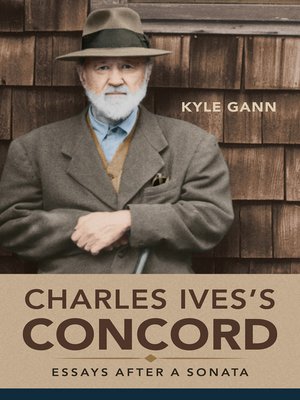
Sign up to save your library
With an OverDrive account, you can save your favorite libraries for at-a-glance information about availability. Find out more about OverDrive accounts.
Find this title in Libby, the library reading app by OverDrive.



Search for a digital library with this title
Title found at these libraries:
| Library Name | Distance |
|---|---|
| Loading... |
In 1921, insurance executive Charles Ives sent out copies of a piano sonata to two hundred strangers. Laden with dissonant chords, complex rhythm, and a seemingly chaotic structure, the so-called Concord Sonata confounded the recipients, as did the accompanying book, Essays before a Sonata . Kyle Gann merges exhaustive research with his own experience as a composer to reveal the Concord Sonata and the essays in full. Diffracting the twinned works into their essential aspects, Gann lays out the historical context that produced Ives's masterpiece and illuminates the arguments Ives himself explored in the Essays . Gann also provides a movement-by-movement analysis of the work's harmonic structure and compositional technique; connects the sonata to Ives works that share parts of its material; and compares the 1921 version of the Concord with its 1947 revision to reveal important aspects of Ives's creative process. A tour de force of critical, theoretical, and historical thought, Charles Ives's Concord provides nothing less than the first comprehensive consideration of a work at the heart of twentieth century American music.|
Cover
Title
Copyright
Contents
Preface
Chapter 1. The Story of the Concord Sonata, 1911–1947
Chapter 2. The Programmatic Argument and Henry Sturt
Chapter 3. The Human Faith Theme and the Whole-Tone Hypothesis
Chapter 4. "Emerson": The Essay
Chapter 5. "Emerson": The Music
Chapter 6. The "Emerson" Concerto and Its Offshoots
Chapter 7. Hawthorne and The Celestial Railroad
Chapter 8. "Hawthorne"
Chapter 9. "The Alcotts"
Chapter 10. "Thoreau": The Essay
Chapter 11. "Thoreau": The Music
Chapter 12. A Harmony of Imperfections: The Epilogue
Chapter 13. The First Piano Sonata
Chapter 14. Editions (1920 versus 1947) and Performance Questions
Appendix A. Correction of Misattributed Quotations in Essays before a Sonata
Appendix B. Variants in Available Recordings of the Concord Sonata
Appendix C. Must a Song Always Be a Song? Keynote Address to the 2009 Ives Vocal Marathon, Wesleyan
Notes
Bibliography
Index
|
"This is an interesting and important book. . . . Highly recommended."—Choice
"Not only an important addition to the thinking about Ives, but a moving companion to the artist and the Concord."—Wire
"In Charles Ives's Concord: Essays After a Sonata Gann's analysis takes the form of a kind of biblical exegesis, where canonical texts are pored over by ever-new generations. He achieves a balance between writing for Ives specialists and delivering a text that is compulsively readable. . . . This is a book to savor with headphones."—Times Literary Supplement
|Kyle Gann is a composer and the Taylor Hawver and Frances Bortle Hawver Professor of Music at Bard College. He is the author of No Such Thing as Silence: John Cage's 4'33" and Robert Ashley.
"Not only an important addition to the thinking about Ives, but a moving companion to the artist and the Concord."—Wire
"In Charles Ives's Concord: Essays After a Sonata Gann's analysis takes the form of a kind of biblical exegesis, where canonical texts are pored over by ever-new generations. He achieves a balance between writing for Ives specialists and delivering a text that is compulsively readable. . . . This is a book to savor with headphones."—Times Literary Supplement
|Kyle Gann is a composer and the Taylor Hawver and Frances Bortle Hawver Professor of Music at Bard College. He is the author of No Such Thing as Silence: John Cage's 4'33" and Robert Ashley.







